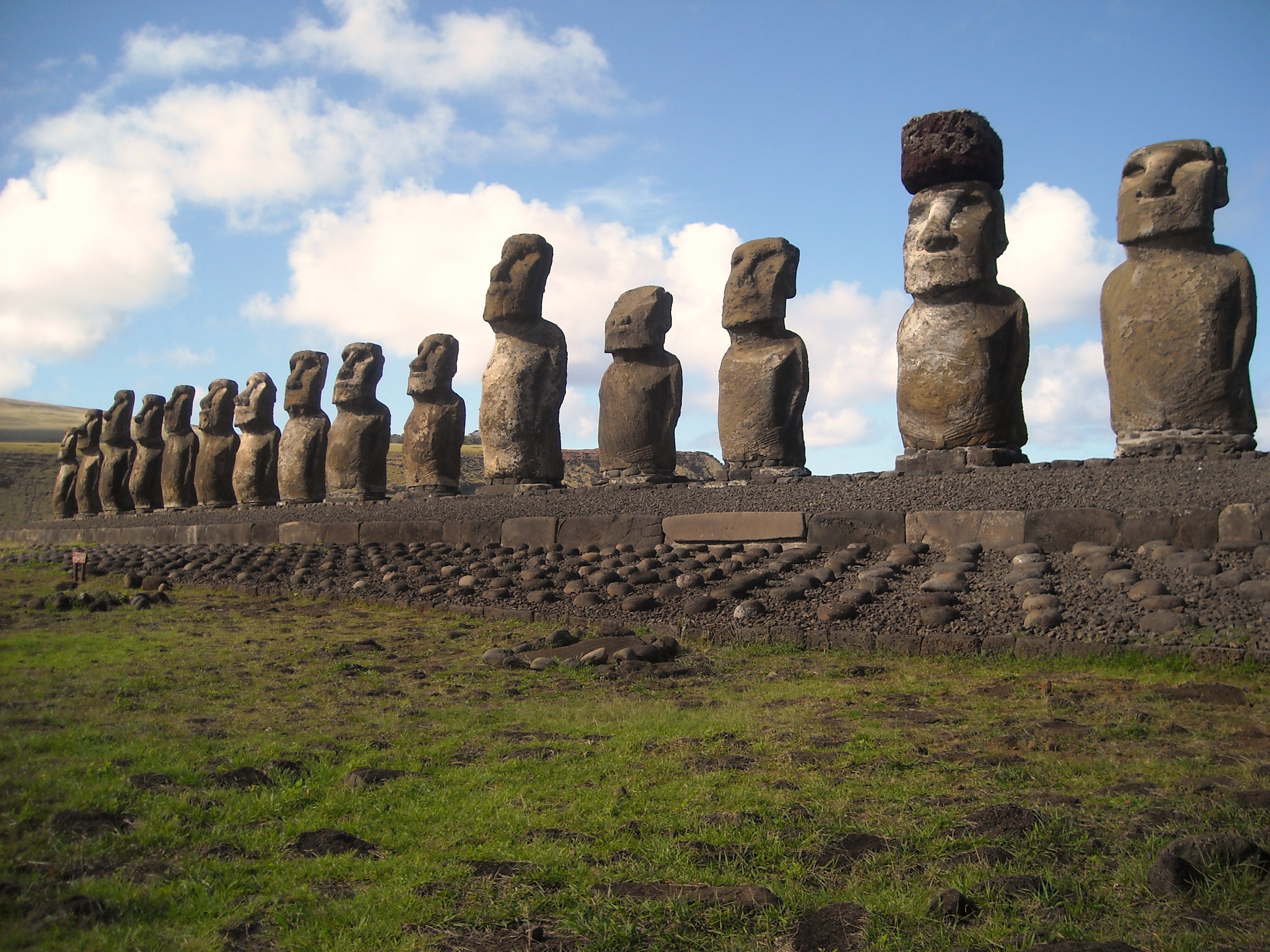The Moai of Easter Island


A moai (the Rapanui moai, «sculpture») is a monolithic stone statue found only on Easter Island or Rapa Nui, part of the V Region of Valparaiso, Chile.
The meaning of the moai is still uncertain, and there are several theories about these statues. The most common of these is that the statues were carved by the Polynesian inhabitants of the islands, between the twelfth and seventeenth centuries, as representations of deceased ancestors, so that project their mana (supernatural power) over their descendants.
They were placed on the ahu (ceremonial platforms) with their faces toward the interior of the island and after encajarles eyes coral or red volcanic rock became the aringa ora (living face) of an ancestor.
Shocking revelation … the heads have bodies.
Most people think that the stone sentinels of the 63 square miles of the Pacific island are single heads. But they all have bodies, and a backstory that is only now being rebuilt. These statues, which are the most photographed, were standing in the quarry. They are buried to the level of half of the torso. So it’s understandable that the public generally has no idea that the statues had bodies.
The gray volcanic stone, of which are carved the moai came from the volcano Rano Raraku. All who are standing moai were erected recently, since they had been shot down before the eighteenth century. The disordered location of the moai at Rano Raraku indicates that they were probably being taken to Ahu of some villages and were abandoned because of the war.

The type of stone found on the site is unique on the island, which is called «Toba Lapilli», the main feature of this is its low hardness, which would have benefited more easily enabling artisans to carve time moai. In addition, Rao Raraku volcano, were near the area of the peninsula «Poike» where wood had recourse thanks to the palm trees that stood there before.
Another style of Moai: Moai While all are different, all are carved down the same style: Right angles, thin nose, hard-featured, streamlined body. However, it was found by the famous explorer Thor Heyerdahl (One of the many researchers who have tried to demonstrate the origin of the Polynesian Culture) on an expedition he made in 1955: The «Tuku Turi». This moai unlike the others, is sitting, and his body and head shape and proportions are much more anatomically correct than the rest of the statues, his nose is flat and rounded. It is estimated that its data is of the sixth century.
In the book «Aku Aku» appears it was a real surprise to find this moai Rapa Nui, because they had never seen or heard a similar legend about Tuku some Turi.